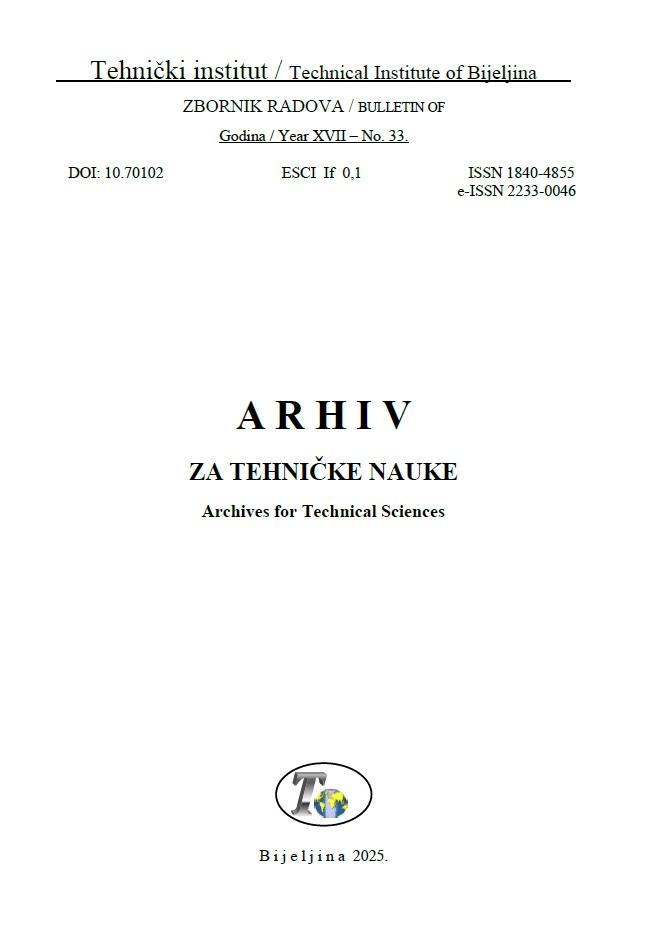MAPPING MENTAL HEALTH LITERACY ACROSS VARIED PROFESSIONS AND ITS FAR-REACHING IMPLICATIONS
Background Mental health is regarded as the core component of a person's health. India has a burden of 2442 disability-adjusted life years per 100,000 population imputable to mental health disorders, according to the WHO. The age-standardized suicide rate is 21.1 per 100,000 population. The estimated economic cost of mental dis...
By Farida Virani, G. Amutha, M. Kotteeswaran, R. Priyadharshini, A. Narmadha, B. Kalaiyarasan, Arun Raaza
HOMOGENEITY URBAN CELLULAR AUTOMATA MODEL – FROM REGENERATIVE TO SUSTAINABLE CITIES
Careful control of the structural makeup of urban places is necessary to maintain their distinctive character while advancing sustainability. A successful approach to this problem is striking a balance between homogeneity and variability in order to provide an urban landscape that is both coherent and dynamic. In the past, homogeneity—which i...
By Israa Al-Janabi, Sarmad Jawad, Zahraa Ahmed Al-Mammori, Fatin. H ALaaraji, Doaa Hazim Aziz, Ghadeer H Abbas
IOT POWERED SMART CRADLE FOR INFANT CARE AND VACCINATION MONITORING SYSTEM
As healthcare technology advances, there is growing enthusiasm for the Internet of Things (IoT), particularly in the era of baby health. To monitor and enhance baby health through ongoing data gathering efforts and health management features, this article presents a smart crib which integrates with Internet of Things technology. The temperature, mo...
By Sivasangari Ayyappan
ENVIRONMENTAL ANALYSIS OF A LOW-COST SOLAR STOVE USING RECYCLED MATERIALS: A CLEAN ENERGY INNOVATION FOR HOT ARID REGIONS
Providing clean and affordable energy for domestic use remains a persistent challenge in hot and arid regions, particularly in off-grid communities. This study presents a geo-environmental analysis of an innovative low-cost solar stove designed using recycled aluminum heat exchangers and copper tubing, pressurized with air to enhance thermal conduc...
By Zainab A Alzarfi, Safaa M. Almudhafar, Israa Jafar, Jameel Al-Naffakh, Basim Almayahi
EVALUATING THE EFFECT OF PARTICIPATORY URBAN PLANNING ON COMMUNITY WELL-BEING AND QUALITY OF LIFE
This study aimed to evaluate the impact of participatory urban planning on community well-being and quality of life. Urban planning is done to transform urban areas into sustainable cities with adequate open spaces and many features of smart cities. To achieve successful urban planning, active and involved participation of the stakeholders is neces...
By Ammar A Naji
A COMPARATIVE STUDY OF ADVANCED CONTROL STRATEGIES FOR INTERLINK CONVERTERS IN HYBRID RENEWABLE ENERGY MICROGRIDS
This paper derives a novel direct model predictive based power controller (DMPPC) for renewable energy systems (RES) to address voltage fluctuations caused by varying power demands and renewable source outputs. This method utilizes the bi-directional DC-DC converter in the Battery Energy Storage (BES) System to level the renewable energy output, al...
By P. Sai Sampath Kumar, P. Suresh, D. Lenine
ANALYZING AND PRIORITIZING HEALTHCARE SERVICE PERFORMANCE IN HOSPITALS USING SERQUAL MODEL
Health care is essential for both public welfare and national growth. Nevertheless, the number of hospitals has increased; patients still face many problems highlighting the need for better healthcare services. The Present study aims to analyze the quality of healthcare services in view of patients’ fulfillment and identify their requirements...
By Abdul Z. Hameed, R. Balamurugan, Ali Rizwan, Muhammad Atif Shahzad
GEOCHEMICAL AND GEOLOGICAL STUDIES OF OIL SHALES IN AB KASEH SECTION, KOUHRANG COUNTY, CHAHARMAHAL AND BAKHTIARI PROVINCE, IRAN
This study investigates the geochemistry of oil shales from the Ab Kaseh section in western Kohrang, Chaharmahal and Bakhtiari Province, Iran. Ten shale samples were collected for geochemical analyses, including Rock-Eval pyrolysis and XRF/ICP analyses. Ten thin sections were also prepared for petrographic analysis. A stratigraphic column and depos...
By Milad Tahmasebi, Farhad Ehya, Ghodratollah Rostami Paydar
ULUGH BEG MADRASAH AS A PILLAR OF ASTRONOMICAL ADVANCEMENT IN CENTRAL ASIA
The Ulugh Beg Madrasah in Samarkand is a prominent scientific and educational institution of Central Asia. The construction of the madrasah was initiated in the 15th century by Ulugh Beg, the Timurid ruler and astronomer. The madrasah played a great role in the development of astronomy, mathematics, and Islamic studies. This article discusses the h...
By Mavzuna Mukhiddinova, Valisher Sapayev, Manzura Yakubova, Maqsad Maytakubov, Dildora Agzamova, Pardaxol Haydarova, Zukhrobiddin Olimov
GA-PSO-MIN: A HYBRID HEURISTIC ALGORITHM FOR MULTI-OBJECTIVE JOB SCHEDULING IN CLOUD COMPUTING
Due to the variable resource availability and diverse user needs, efficient task scheduling in cloud computing has become increasingly important. This study introduces GA-PSO-Min, a novel approach that synergistically combines genetic algorithms (GA), particle swarm optimization (PSO), and Min-Min strategy to improve scheduling efficiency in cloud ...
By Vahid Mokhtari, Nasser Mikaeilvand, Abbas Mirzaei, Babak Nouri-moghaddam, Sajjad Jahanbakhsh Gudakahriz






